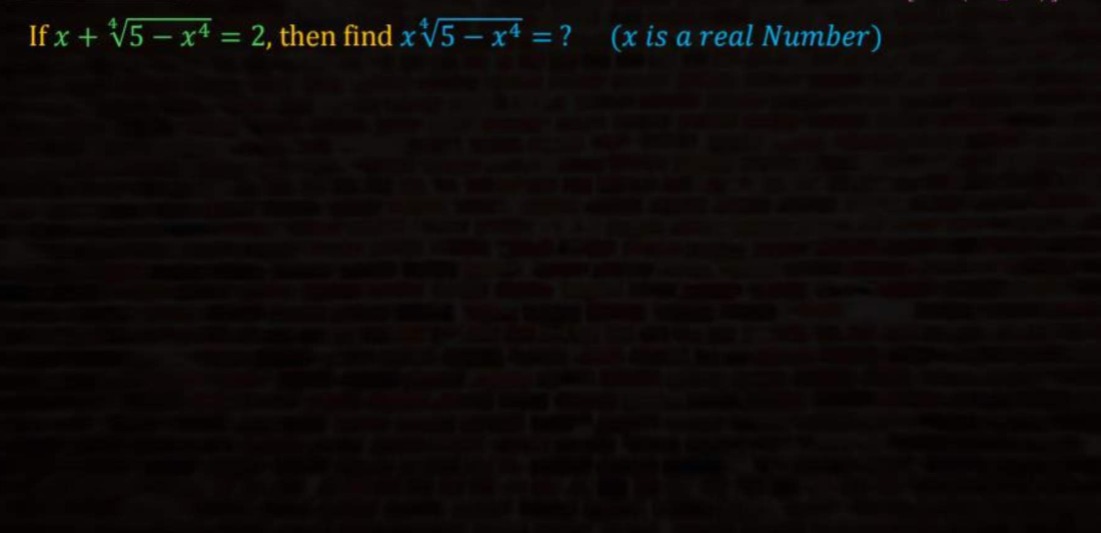Question
Question: If $x + \sqrt[4]{5-x^4} = 2$, then find $x\sqrt[4]{5-x^4} = ?$ (x is a real Number)...
If x+45−x4=2, then find x45−x4=? (x is a real Number)

28+42
28−42
48+168
48−168
28−42
Solution
Let the given equation be x+45−x4=2. Let y=45−x4. From this definition, we must have y≥0 and 5−x4≥0. The equation becomes: x+y=2
Also, raising y=45−x4 to the fourth power gives: y4=5−x4 x4+y4=5
We have a system of two equations with x and y:
- x+y=2
- x4+y4=5
We want to find the value of x45−x4, which is xy. We can express x4+y4 in terms of x+y and xy. First, x2+y2=(x+y)2−2xy=(2)2−2xy=4−2xy. Then, x4+y4=(x2+y2)2−2(xy)2=(4−2xy)2−2(xy)2.
Substitute this into equation (2): 5=(4−2xy)2−2(xy)2 5=(16−16xy+4(xy)2)−2(xy)2 5=16−16xy+2(xy)2
Rearranging this into a quadratic equation for xy: 2(xy)2−16xy+16−5=0 2(xy)2−16xy+11=0
Let P=xy. The quadratic equation is 2P2−16P+11=0. Using the quadratic formula to solve for P: P=2(2)−(−16)±(−16)2−4(2)(11) P=416±256−88 P=416±168 P=416±4×42 P=416±242 P=28±42
So, xy can be 28+42 or 28−42.
Now we must consider the constraints that x and y must be real numbers, and y≥0. x and y are the roots of the quadratic equation t2−(x+y)t+xy=0, which is t2−2t+P=0. For x and y to be real, the discriminant of this quadratic must be non-negative: D=(−2)2−4(1)(P)=4−4P≥0 4≥4P⟹P≤1.
Let's check the two possible values for P:
-
P1=28+42. Since 42>0, 8+42>8, so P1>28=4. This value is not less than or equal to 1, so it does not yield real solutions for x and y.
-
P2=28−42. Let's check if P2≤1: 28−42≤1 8−42≤2 6≤42 Squaring both sides (which are positive): 36≤42. This is true. So, P=28−42 is the only possible value for xy that yields real solutions for x and y.
The roots of t2−2t+P=0 are t=22±4−4P=1±1−P. We need to ensure y≥0. The roots are 1+1−P and 1−1−P. Since P≤1, 1−P≥0, so 1−P is real. Also, P=xy=28−42≈28−6.48≈0.76. So 1−P≈1−0.76=0.24, and 1−P≈0.24<1. Thus, both roots 1+1−P and 1−1−P are positive. Therefore, the condition y≥0 is satisfied for either assignment of x and y.
The value of x45−x4=xy is P=28−42.
